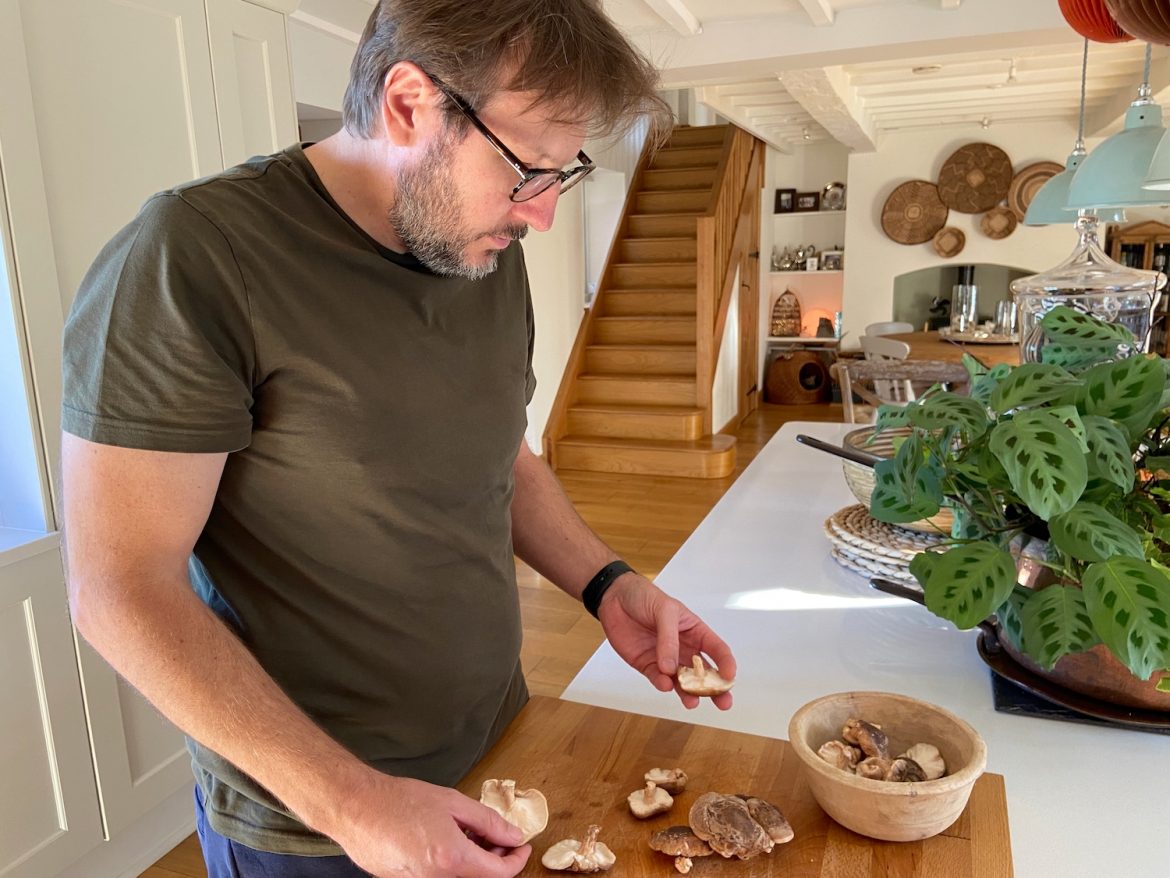We love mushrooms. In fact, mushrooms feature in some way or another in our dinners 4-5 per week because they’re so versatile, healthy and delicious, and we enjoy them all from chestnuts mushroom to oysters and from shiitakes to enokis or shimejis.
Not only do mushrooms add flavour and texture to meals, they’re low in calories, sodium concentration and glucose, and have significantly high levels of vitamins, minerals and nutrients. They are a tiny health bomb.
Regular followers will know that we grow our own veg and I’ve toyed with the idea of growing mushrooms for years, but haven’t taken the plunge because unlike growing tomatoes or kale, growing mushrooms requires specialist knowledge, and so I’ve put this off.
So when we were given the opportunity to evaluate a grow kit of chestnut mushrooms and shiitakes from Suttons we jumped at the opportunity because it would give us valuable first hand experience growing mushrooms without going through the complex process of making substrates.
Watch our 60-second video below to see how they turned out.
You can buy the chestnut mushroom and shiitake grow kits we used directly from Suttons or enter our giveaway below to win a chestnut mushroom grow kit.
Win a 7.5 litre chestnut mushroom windowsill kit from Suttons
Win A Chestnut Mushroom Windowsill KitChestnut mushrooms
Chestnut mushrooms are undoubtedly the most versatile fungi when it comes to cooking. They work in just about every dish you’re preparing so we were really keen to grow these ourselves.
Here’s the interesting thing about chestnut or button mushrooms. When you harvest button mushrooms when they’re relatively small (and young) they look like the button mushroom we all know, but if you let them keeping growing for another 5-7 days they essentially become portobello mushrooms that initially take the shape of a dome and flatten out with age.
That’s what we did, and the results were extremely satisfying. The button shaped mushroom opened up and revealed gills on the underside that were really dark brown/black. The flavour and texture was incredible – we grew a mushroom that was dense and that had the texture of meat, and the flavour was deep, earthy and rich.
As an added point of interest, if you picked these mushrooms between their button and portobello stage, they’re essentially crimini mushrooms.
In terms of harvesting, you’re supposed to twist the mushrooms from the bed. Due to the location of where we harvested the mushrooms, we didn’t want to disrupt the next flush of mushrooms that were emerging, so we used a sharp knife to cut them at the bottom of the stems and that worked perfectly.
In terms of timelines, it took us about 20 days before we had good-sized chestnut mushrooms and 25 days for portobellos. The only downside was that we wished we had more mushrooms. Having said that, from the time we filmed the first harvest, the second flush is under way and it looks like it’ll deliver more mushrooms. After each harvest we watered the growing medium to ensure that the next wave had sufficient moisture.
Shiitake mushrooms
While we use chestnut or portobello mushrooms 90% of the time in our own cooking, shiitakes are my out and out favourite for Asian stir fries and they are a true gourmet mushroom in the kitchen.
We mentioned the health benefits of mushrooms and shiitakes are real winner in this area. There’s scientific data to suggest that they can slow down the growth of cancerous tumours and they generally improve the level of immune cells in your body.
Shiitakes have better flavour and texture than button mushrooms and they have a wonderful aroma when sautéing or cooking them. In a well balanced stir fry, they play a critical role in delivering umami.
Our shiitake caps were about 10cm wide. As they grew, the cap was domed and gradually leveled out and became flatter. The caps were dark brown and faded into a light brown colour. The gills were white.
These mushrooms started fruiting and producing very quickly, and they were terrific in terms of taste and texture. It’ll be interesting to see how many more we get in subsequent flushes.
Growing conditions
For both kits, we placed them on the far wall of our studio. Mushrooms do not contain chlorophyll so they don’t need light to grow in. They do require some light, but not direct sunlight, and the light just acts as a signal for the mushrooms to fruit, so if you’re growing these on a windowsill be aware of this.
